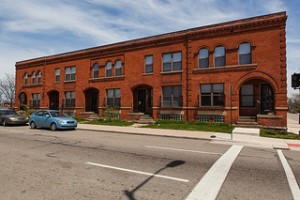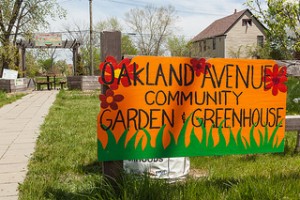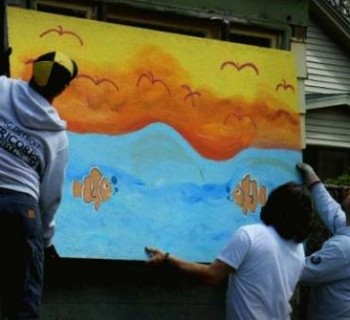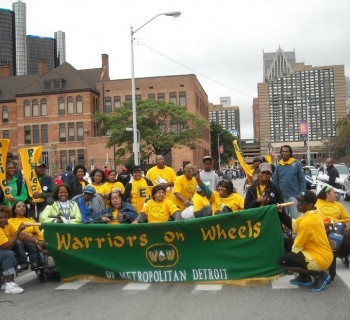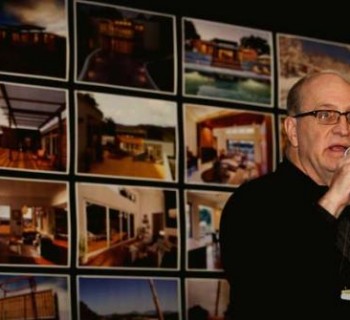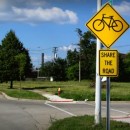DETROIT—The Vanguard Community Development Corporation has a long-term vision for Detroit's North End neighborhood. To help Vanguard realize that vision, the Project for Public Spaces and its partners at Livability Solutions have provided Vanguard with a free technical-assistance grant.
Vanguard is one of nine organizations and communities in the United States that were awarded the technical assistance grant in late April. This assistance will help "envision a more vibrant public realm and destinations in the North End neighborhood" and "identify ... site-specific improvements to serve as pilots for placemaking in the neighborhood," according to a PPS statement.
PPS is a nonprofit planning, design and educational organization that helps groups and individuals create and sustain public spaces that build stronger communities. Its placemaking approach helps residents transform their public spaces into vital places that highlight local assets, spur rejuvenation and serve common needs, says PPS.
Vanguard, which applied for the technical-assistance grant last 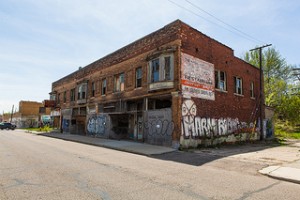 year, is the non-profit development arm of Second Ebenezer Church in Detroit. It has developed 236 units of affordable housing thus far, including Cameron Court, a senior citizens apartment building, and also offers various community service programs.
year, is the non-profit development arm of Second Ebenezer Church in Detroit. It has developed 236 units of affordable housing thus far, including Cameron Court, a senior citizens apartment building, and also offers various community service programs.
Livability Solutions is a coalition of professionals from 10 leading nonprofit organizations, with experience in sustainable development, who work with communities on issues like transportation, land use, placemaking, environmental matters and public involvement, with a goal of improving the livability and smart growth of communities and neighborhoods.
Different people or groups define the parameters of the North End neighborhood differently, but Khalilah Gaston, Vanguard's interim executive director, defines it as being bordered by Highland Park on the north and the I-94 freeway on the south, while its western and eastern borders are Woodward Ave. and Russell Ave., respectively. North End includes the Arden Park-East Boston Historic District and the historic Milwaukee Junction area.
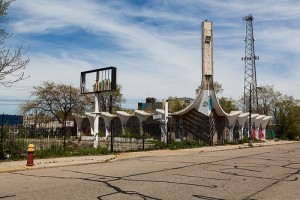 Vanguard's goal for the North End is to "help position it as a neighborhood of choice, for both current and future residents," says Gaston. "We want to preserve its diversity, and make sure it's inclusive for people of all races, ethnicities, occupations and income levels, and celebrate the area's cultural and its historic significance."
Vanguard's goal for the North End is to "help position it as a neighborhood of choice, for both current and future residents," says Gaston. "We want to preserve its diversity, and make sure it's inclusive for people of all races, ethnicities, occupations and income levels, and celebrate the area's cultural and its historic significance."
Indeed, the North End was once on the northern edge of the old Paradise Valley commercial and entertainment district, which was home to many blues and jazz clubs, from the 1930s to the 1950s -- clubs that presented the legendary likes of Billie Holiday, Duke Ellington, Ella Fitzgerald and Count Basie, among many others.
John Lee Hooker immortalized its main drag, Hastings Street, and Henry's Swing Club, in his iconic blues song "Boogie Chillen," which he recorded in 1948 while living in Detroit, working in an auto plant, and playing some of those clubs.
On the economic-development front, says Gaston, "we want to encourage true sustainability and true infrastructure, and give residents an opportunity to own businesses in the area -- and to prioritize local hiring by those businesses owned by those who don't live in the neighborhood. And we want to make sure it's connected to economic opportunities in the greater Woodward corridor."
More specifically, Vanguard is looking at ways to to "connect the North End neighborhood to the opportunities that will come with the completion of the M-1 RAIL project," she says. "We want North End to be connected to the development in the downtown and riverfront areas that will also be the outgrowth of the M-1 project."
Vanguard will work with developers of the projects between Woodward and John R., to connect those developments, so that "it's a sequence of destinations, to encourage walkability between them," says Gaston. These are mixed-use projects, with retail on the street level, and apartments on upper floors.
The site-specific improvements will include a range of public space amenities like gardens, parks and public art installations, she says: "We have number of studios who want to combine the art with the public space." Gaston is effusive about the North End's virtues: "One is its history -- it has a rich auto-industry history, plus that musical history -- and we want to promote that, and educate people about that.
"And it has a traditional feel, with many single-family homes for people who want to live along the Woodward corridor, and be connected to it. I used to live in Woodbridge, but when I got ready to buy, I also wanted to live in that corridor," says Gaston.
Some of the challenges facing North End are the result of 60-plus years worth of disinvestment in the area. "It began in the 1940s, then reached its peak" with the construction of the Chrysler Freeway in the 1960s, laments Gaston. "That really disrupted the ethnic and African-American neighborhoods."
So, in addition to a lack of retail businesses and inadequate street lighting, the area presently has "75 or 80 residential structures" that are empty and need to be demolished, she says, "as well as a number of commercial buildings, like the ones along Oakland." Vanguard is working with the city to secure funds for the demolition.
At the same time, Vanguard is in the process of identifying older structures that should be saved, either because they have architectural significance, or becuase they could be reconfigured into apartment buildings that would house between two and six families each.
In June, says Gaston, PPS livability experts will conduct one-to-two day workshops "for North End stakeholders, to envision a more vibrant public realm and destinations, by leveraging development, and linking the neighborhood to broader city- and district-wide revitalization plans, including M-1 RAIL." Later, PPS will prepare key recommendations.
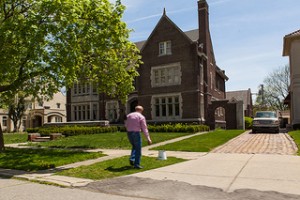 Later this summer, Vanguard will also launch the second phase of its program that helps North End homeowners make exterior repairs to their houses and buildings.
Later this summer, Vanguard will also launch the second phase of its program that helps North End homeowners make exterior repairs to their houses and buildings.
"We definitely want to break ground on one significant project this year," says Gaston. "We've had meetings with several developers about their plans for building-rehabilitation projects, and we'll continue talking to them about their timelines." "Our goal is to have one major development every year over the next several years. This is not a short-term plan with a finite end date. It's a long-term vision for the neighborhood, and we hope that we have new projects and improvements happening every year, for many years to come."



